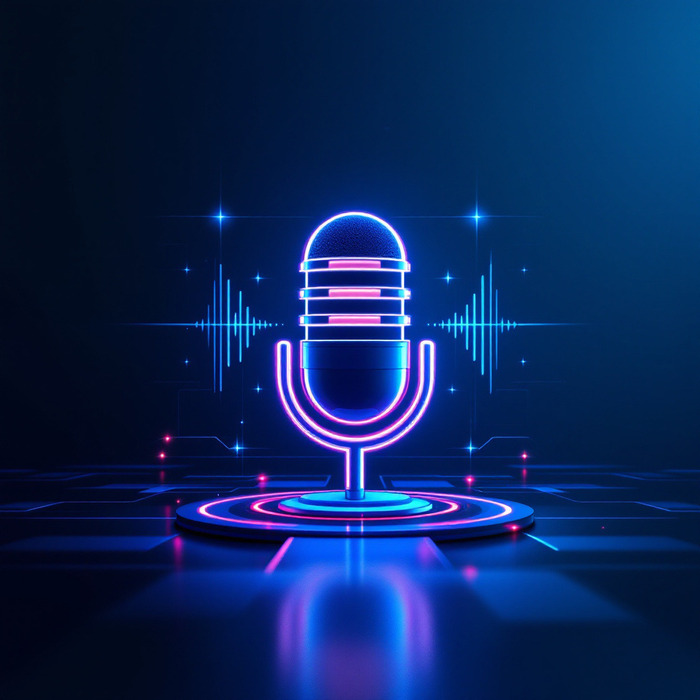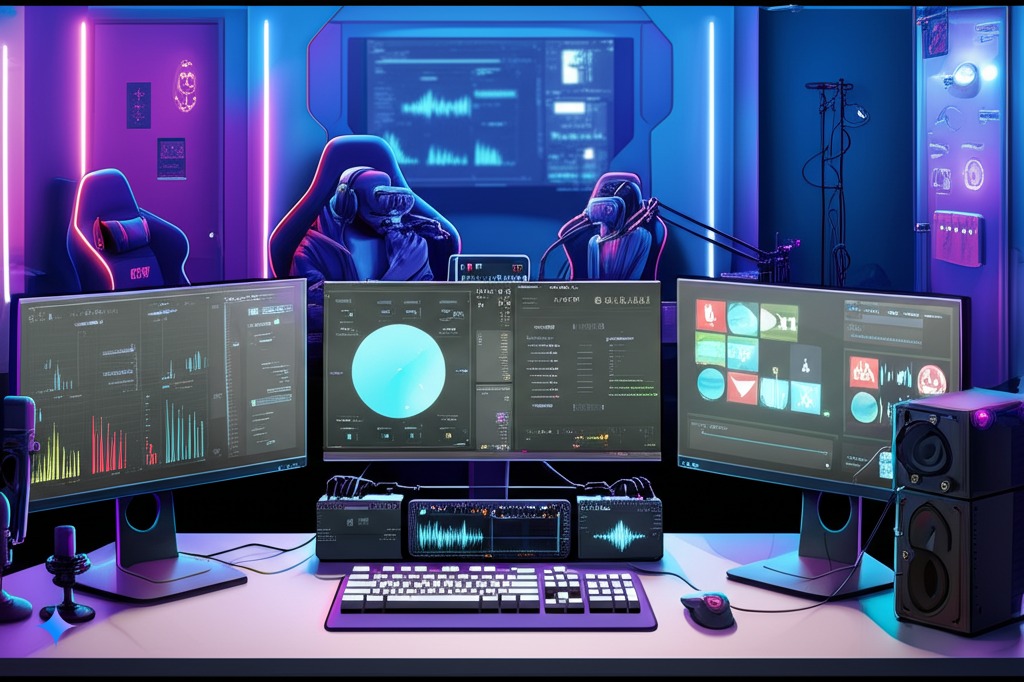
Find out how scary voice text to speech is changing horror content creation in 2025. Check out the best tools to turn your words into bone-chilling sounds that will terrify your audience.
Introduction:
Scary voice text to speech tech is doing some pretty incredible things these days. What used to be robotic, fake-sounding computer voices have transformed into genuinely terrifying audio that can give people real goosebumps.
Back in the early days, scary computer voices sounded obviously fake and more funny than frightening. The technology was basic – just changing pitch and adding some echo. Not very convincing. By the 2010s, things got better, but still nothing like what we have now.
Fast forward to 2025, and wow! These creepy AI voice generators have become a go-to tool for all kinds of content creators. Whether you’re making horror stories in your bedroom or producing professional podcasts, this technology is changing how we create spooky content from start to finish.
The best part? You don’t need any technical skills to use these tools anymore. Many powerful horror voice synthesis programs come as affordable software or even free options that anyone can figure out.
This shift brings up some interesting questions about voice acting. When an AI creates the perfect terrifying narrator for your content, who’s really the performer? Most creators find that these tools work best as helpers rather than replacements – they expand what’s possible rather than taking over completely.
In this guide, we’ll look at how these frightening text to speech tools work throughout the entire creation process – from writing your script to getting that final spine-chilling audio ready for your audience. Whether you make horror content yourself, are into tech, or just curious about how computers can create convincing scary voices, this exploration shows where the technology is headed in this rapidly evolving field.
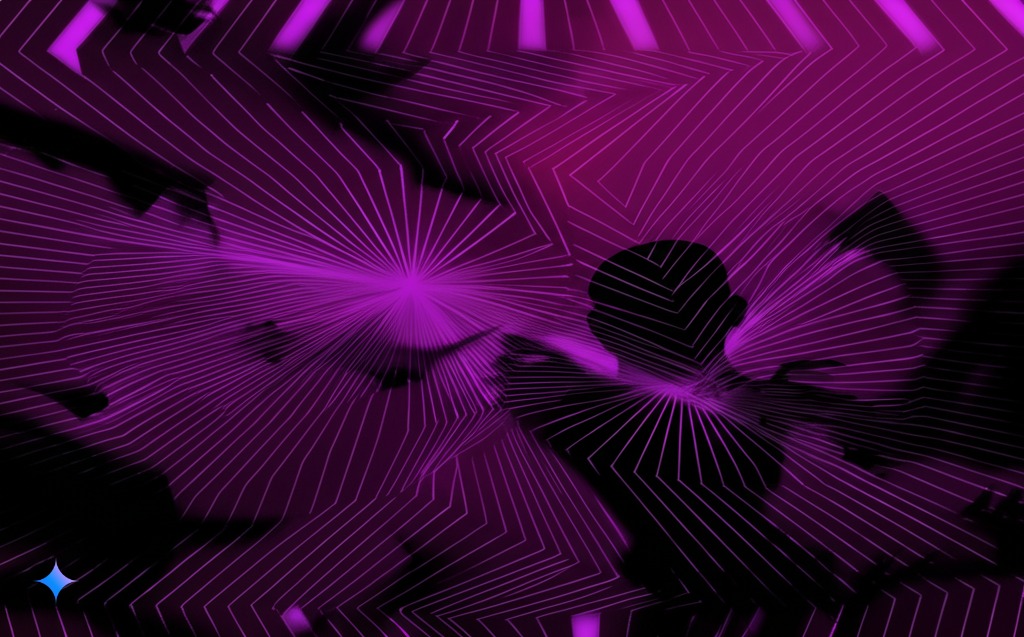
Understanding Scary Voice Text to Speech Technology
What Makes a Voice Sound Scary?
So what exactly makes a voice sound creepy? It’s not just about speaking in a deep tone. Scary TTS software works by tweaking several things at once.
These programs mess with things like how high or low the voice sounds, the feeling behind the words, and the rhythm of how everything flows together.
When a voice suddenly drops super low or switches to a whisper out of nowhere, something in our brain immediately goes “uh oh – danger!” That’s why the best scary voices don’t just sound deep the whole time – they mix it up. They might sound normal for a bit, then get really quiet, then suddenly drop really low or sound all distorted.
The really good tools add little details like breathing sounds, that creaky voice thing people do, or even those weird glitches that make it sound like something’s messing with the recording. These small touches are what separate obviously fake voices from ones that genuinely give you the creeps.
If you’re interested in the technical side of voice quality, check out our article on AI text to speech quality to understand why some voices just work better than others.
The Psychology Behind Scary Voices
There’s actual science that explains why certain voices freak us out. When we hear something that sounds almost human but not quite right, we hit what scientists call the “uncanny valley” – that weird, uncomfortable feeling when something seems normal but just off enough to be disturbing.
Vocal distortion effects are a big deal here. Our brains are super-tuned to recognize human voices perfectly, so when a voice has subtle distortions or unnatural qualities, our internal alarm system starts going off. That’s why the best eerie voice generator tools don’t go crazy with effects – they keep things just human enough to be unsettling.
Weird timing is a huge deal too. Regular talking has a back-and-forth rhythm we all expect, but when a voice suddenly…stops…for too long… or rushesreallyfast through certain words, it makes us tense up. Our brains like to predict what’s coming next in conversation, so when they can’t figure out the pattern, that unpredictability itself becomes scary.
Top Scary Voice Text to Speech Generators in 2025
Professional Options for Serious Content Creators
If you’re serious about creating genuinely frightening content, you’ll want tools that give you maximum control and quality. Here are some of the best professional options:
Murf.ai has become a favorite among horror content creators for good reason. Their voice library includes several voices specifically designed for scary content, and their customization options let you adjust everything from breathiness to echo effects. What makes Murf stand out is how natural the voices sound even when pushed to extremes.
Another really good option is LOVO.AI, which has special voice packs just for horror. Their “Whisper” and “Possessed” voices are seriously creepy and perfect for giving people that spine-tingling feeling. What makes them special is how they include those tiny voice shakes and little imperfections that make scary voices sound real.
Both these tools let you try them for free before you spend any money. If you make scary content regularly, they’re totally worth paying for when you hear the huge quality difference compared to the free stuff.
For those specifically interested in using these voices for narration, our article on AI text to speech for narration provides additional insights on selecting the right voices for storytelling.
Free and Budget-Friendly Scary Voice Generators
Not everyone needs pro-level tools, especially if you’re just having fun or just getting started. There are some surprisingly good free and cheap options out there:
Voiceovermaker.io offers several free creepy voices in their basic tier. While you won’t get all the advanced customization of paid tools, their “Haunted” voice preset is pretty impressive for creating quick scary clips.
For beginners looking for something super simple, FILKI.AI has a user-friendly interface with preset scary voice templates. You literally just type your text, pick a creepy voice style, and hit generate. No technical knowledge required!
The free tools usually have some limits – maybe you can only make short clips or they put their logo sound at the end. But they’re great for trying things out or making quick scary sounds for TikTok or Instagram.
If you’re looking to save money but still want decent quality, check out our guide on free text to voice online where we show you all the best options that won’t cost you anything.
Creating Different Types of Scary Voices
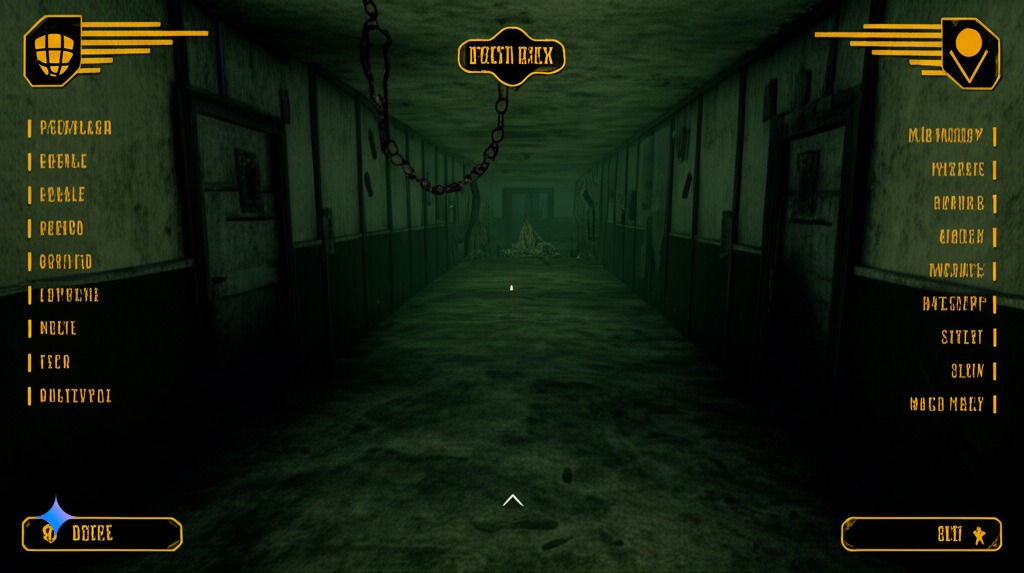
Not all scary voices are the same. Different types of horror content need different vocal approaches:
- Whispered voices create an intimate, unsettling feel perfect for ghost stories
- Deep, demonic voices work well for monster characters or supernatural entities
- Glitchy, distorted voices can simulate paranormal EVP recordings or possessed technology
- Childlike voices with subtle unnatural qualities can be extremely unsettling
The best spooky voice creator tools let you mix and match these qualities to craft exactly the type of scary voice your content needs. For example, you might want a mostly normal voice that occasionally glitches out for a character who’s slowly being possessed, or a whispered voice with sudden loud moments for a stalker narrative.
Creating Professional-Quality Scary Voices
Getting Started: The Basics of Voice Selection
Before diving into all the fancy effects, you need to start with the right base voice. This is where many beginners go wrong – they pick any voice and then try to make it scary with tons of effects. But that’s like trying to make a great horror movie with bad actors and too many special effects.
Instead, look for voices that already have qualities that lean toward what you need. Low, raspy voices make better demons. Clear, innocent-sounding voices work better for creepy child characters. Voices with good articulation work better for whispered content where every word needs to be understood.
Once you’ve got the right base voice, you can start tweaking it to get exactly the effect you want. This approach will give you much more natural-sounding results than trying to completely transform an unsuitable voice.
Our guide on AI text to speech voice editing offers more detailed techniques for manipulating voice characteristics to achieve specific effects.
Step-by-Step Guide to Creating Your First Scary Voice
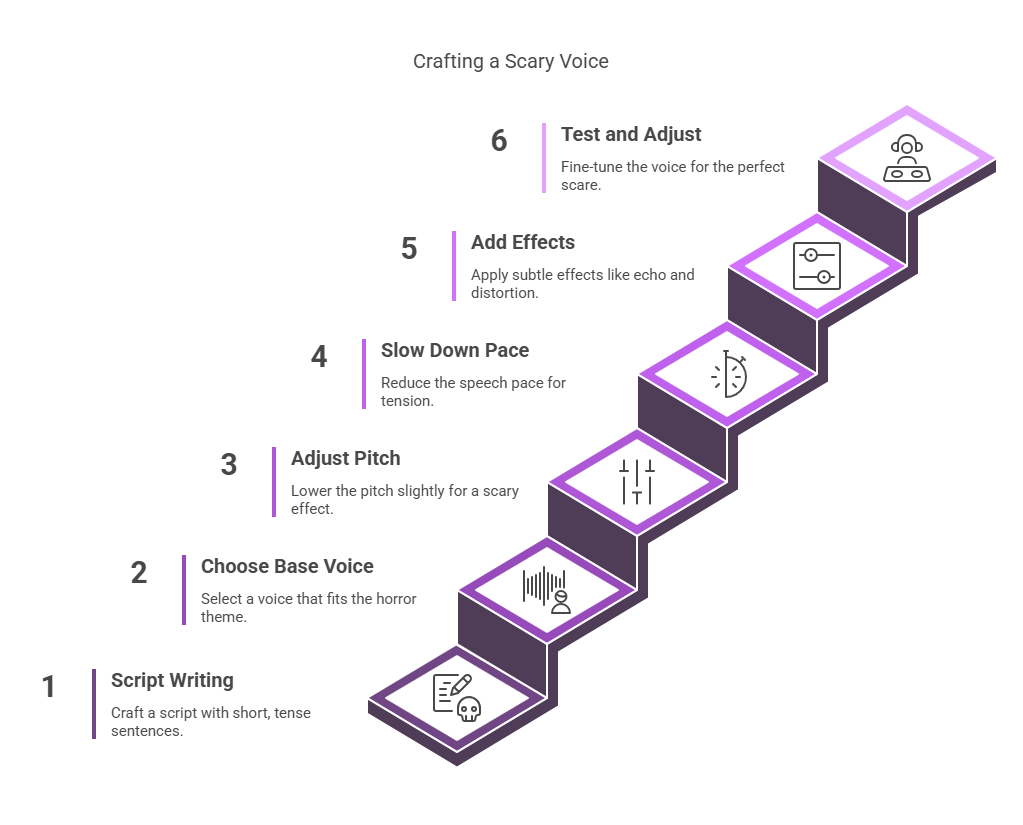
Let’s walk through the basic process using any horror narration AI tool:
- Write your script with scary voices in mind. Short sentences create tension. Varying sentence lengths creates unpredictable rhythm.
- Choose your base voice. Remember, start with something that’s already heading in the right direction.
- Adjust the pitch. For most scary voices, lowering the pitch slightly works well. Don’t go too extreme unless you’re creating a non-human character.
- Slow down the pace. Scary voices often work better when slightly slower than normal speech, but not so slow that it sounds unnatural.
- Add subtle effects. A touch of echo can create an otherworldly quality. Slight distortion can make a voice sound corrupted or possessed.
- Test and adjust. Listen to a sample, then fine-tune your settings. Often the scariest voices use very subtle effects rather than extreme ones.
The key with voice modulation is restraint. The uncanny valley effect works because things are just slightly off from normal. Go too extreme, and you cross into territory that sounds fake or comical instead of scary.
Common Mistakes and How to Avoid Them
I’ve seen a lot of beginners make the same mistakes when creating scary voices. Here are the big ones to avoid:
- Overprocessing: Adding too many effects until the voice becomes unintelligible. Your audience still needs to understand the words!
- One-note delivery: Real fear has dynamics. Even the scariest voice should have moments of relative normalcy for contrast.
-
Ignoring what your content is actually about: You wouldn’t use the same scary voice for everything. A ghost should sound different from a zombie! Think about what makes sense – a ghost might be whispery and echo-y, while a zombie needs that rough, guttural quality.
Bad sound quality: Even the creepiest voice in the world sounds lame if there’s a bunch of background noise or if it sounds all muffled and compressed. Clean audio is super important for creating that immersive feeling that really scares people.
Remember that synthetic voice emotions work best when they vary. Even the most terrifying villain doesn’t speak in the exact same scary tone continuously. Building in subtle variations makes the performance much more believable and effective.
Practical Applications for Scary Voice Text to Speech
YouTube Horror Channels and Scary Storytelling

YouTube has become a huge platform for scary content, and creators are using audio horror content to build massive followings. Horror narration channels use these tools to bring creepy stories to life without needing professional voice actors.
The best channels don’t just use scary voices – they combine them with subtle background sounds, music, and images to create a complete experience. Many successful horror YouTubers actually mix AI voices with their own narration, using the realistic creepy voice generator for YouTube videos to create different characters while maintaining their personal touch for the main narration.
One trick these creators use is to process the final audio through additional software to add room acoustics or vintage effects. This helps mask any artificial qualities and makes the voices sound like they’re coming from specific environments – like an old phone call or a cave.
For more tips specific to YouTube, check out our detailed guide on AI voice over for YouTube which includes techniques that work particularly well on this platform.
Horror Games and Interactive Experiences
Game developers have jumped on this technology in a big way. Indie horror games especially love using AI narration tools because they can generate hours of dialogue without hiring voice actors – perfect for games with procedurally generated content.
What’s really cool is how some games use these tools in real-time. Imagine playing a horror game where the monster’s voice changes based on your actions, or where the ghost speaks directly to you using information from your game profile. This kind of personalized horror wasn’t possible before this technology.
The best text to speech generator for horror podcasts tools are being used for interactive fiction too, where your choices change the story and the voices respond accordingly. This creates much more immersive experiences than just reading text on a screen.
For game developers, our specialized article on AI text to speech for video games provides more technical details on integrating these voices into gaming experiences.
Creating Scary Content for Halloween
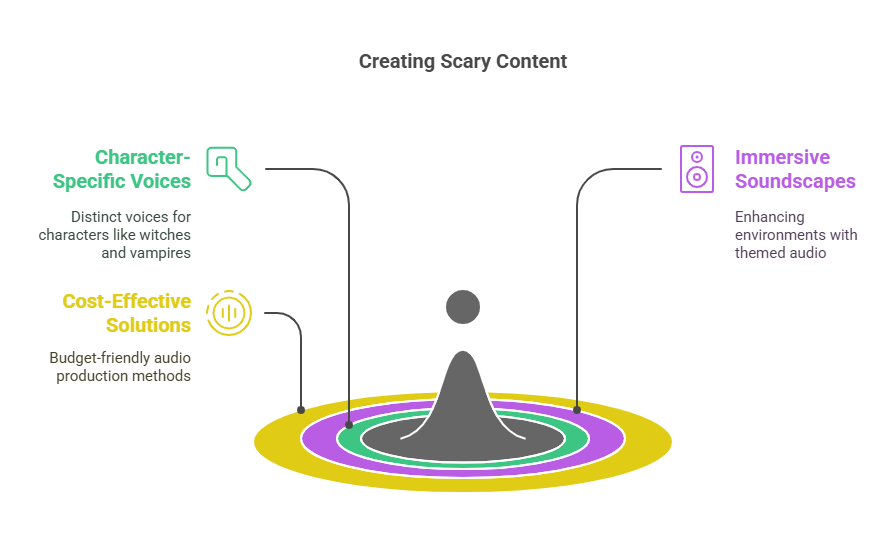
When October hits, everybody goes crazy for spooky stuff. Learning how to create scary voice for Halloween content lets you jump on this seasonal trend, whether you’re making sounds for a haunted house, Halloween ads, or just creepy posts for your social media.
For Halloween content, consider creating character-specific voices rather than generic scary ones. A witch should sound different from a vampire or a zombie. Having a distinct voice for each character makes your Halloween soundscape much more interesting and immersive.
Many theme parks and Halloween events are now using these technologies to create custom audio experiences that can be updated easily throughout the season. It’s much cheaper and faster than bringing voice actors back to record new lines when they want to change things up.
Podcasts and Audio Dramas
The podcast world has embraced scary voice technology in a big way. Horror fiction podcasts are using free scary voice generator for social media content tools to create diverse casts of characters without needing a full voice acting team.
What’s interesting is how they’re combining human and AI voices. Many successful horror podcasts have a human host or main narrator, but use AI voices for character dialogue or for “found footage” elements like fake 911 calls or mysterious recordings.
The trick to making these voices work in a podcast format is careful audio mixing. By adding appropriate room effects, background noise, and audio artifacts, producers can make AI voices sound like they’re coming from specific situations or recording devices, adding to the realism.
If you’re interested in podcast production specifically, our guide on how to use AI text to speech for podcast walks through the entire process from script to publication.
Advanced Techniques for Truly Terrifying Voices
Layering Multiple Voices for Demonic Effects
Want to know how to make AI voice sound terrifying and realistic? One advanced technique pros use is voice layering. This involves generating the same line with 2-3 slightly different voice settings, then playing them simultaneously with slight timing differences.
This creates that classic “legion” or “many voices in one” effect that’s perfect for demonic characters or hive-mind entities. The slight differences between the layers create dissonance that’s extremely unsettling to hear.
To do this effectively, try creating one normal voice, one whispered version, and one pitched-down version. Align them so they mostly sync up but with slight variations in timing. This technique works especially well for key phrases you want to emphasize.
Using Strategic Silence and Unexpected Timing
Scary isn’t just about the sounds – it’s also about when there’s no sound at all. Those perfectly timed pauses before important words build up the tension and make the scary parts hit way harder when they finally come. Horror movie directors have been using this trick forever, and it works just as well with these AI voices.
Try programming longer-than-normal pauses before important revelations in your script. The anticipation this creates makes the eventual delivery much more impactful. Similarly, having a voice suddenly speed up for certain phrases creates a jarring effect that heightens anxiety.
Remember that fear often comes from unpredictability, so varying your pacing throughout your content keeps listeners on edge, never knowing what’s coming next.
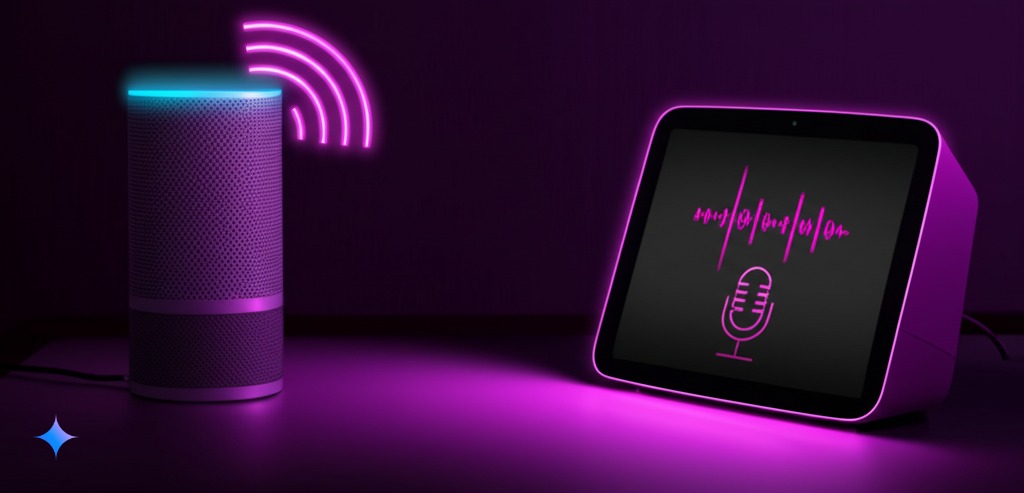
The Future of Scary Voice Technology
The technology behind horror voice synthesis is evolving incredibly fast. The newest systems are starting to incorporate breathing sounds, throat catches, and emotional tremors that make the fear in the voice sound genuinely real.
We’re also seeing the emergence of adaptive voice systems that can respond to listener engagement. Imagine horror experiences that detect when listeners aren’t scared (maybe through smart device sensors) and automatically adjust the voice to be more terrifying until they get a reaction.
The line between human and AI performances is getting blurrier every day. In blind tests, many listeners can no longer reliably distinguish between human actors reading scary stories and advanced AI voice systems. This raises some interesting questions about the future of voice acting in the horror genre.
Frequently Asked Questions
What makes a text-to-speech voice sound genuinely scary?
What actually makes a voice scary? It’s not just one thing – it’s a mix of slightly lower pitch, weird pauses, little echoes, and those small glitches that sound like something’s not quite right. The trick is keeping it subtle – tiny changes from normal speech patterns trigger that “something’s wrong” feeling in our brains.
Can AI voices show emotions like fear and terror?
Today’s AI voices have gotten pretty amazing at showing complex emotions. By studying thousands of hours of real people expressing fear, these systems have figured out the little voice patterns that communicate feelings like dread and terror. They’re not perfect yet, but they’re way better than the flat, robot voices we used to have.
Which scary voice generator gives the most realistic results?
For professional-quality scary voices, Murf.ai and LOVO.AI consistently get the best reviews. If you want free options, Voiceovermaker.io and FLIKI.AI do a surprisingly good job considering they cost nothing. Which one sounds “most realistic” really depends on what kind of scary voice you’re trying to create.
Are there legal issues with using AI voices for horror content?
Always read the rules for any voice generator you use. Some don’t allow certain types of content or require you to credit them. If you’re making money from your content, double-check that the service allows commercial use. Even though the technology is new, it’s probably good to be honest with your audience about using AI voices instead of real actors.
Conclusion about Scary Voice Text to Speech

Scary voice text to speech technology has transformed how creators produce horror content. What started as robotic, obviously fake computer voices has evolved into sophisticated systems that can genuinely frighten listeners. Whether you’re making YouTube videos, podcasts, games, or seasonal Halloween content, these tools put professional-quality scary voices within reach of creators at every level.
The key to success is understanding that the scariest voices aren’t just about effects and processing – they’re about psychology, timing, and context. The best creators use these tools thoughtfully, focusing on building tension and creating contrast rather than just making everything sound as scary as possible.
As these technologies continue to advance, the possibilities for horror content creation will expand even further. But no matter how sophisticated the tools become, the fundamental principles of what makes something scary remain the same. It’s all about playing with human expectations and emotions in ways that create that delicious feeling of fear we seek out in horror content.
So go ahead – give these tools a try and start creating some truly spine-chilling content. Your audience won’t believe their ears.
Sources:
-
https://filme.imyfone.com/text-to-speech/scary-text-to-speech/
-
https://www.hitpaw.com/text-to-speech/scary-voice-text-to-speech.html

